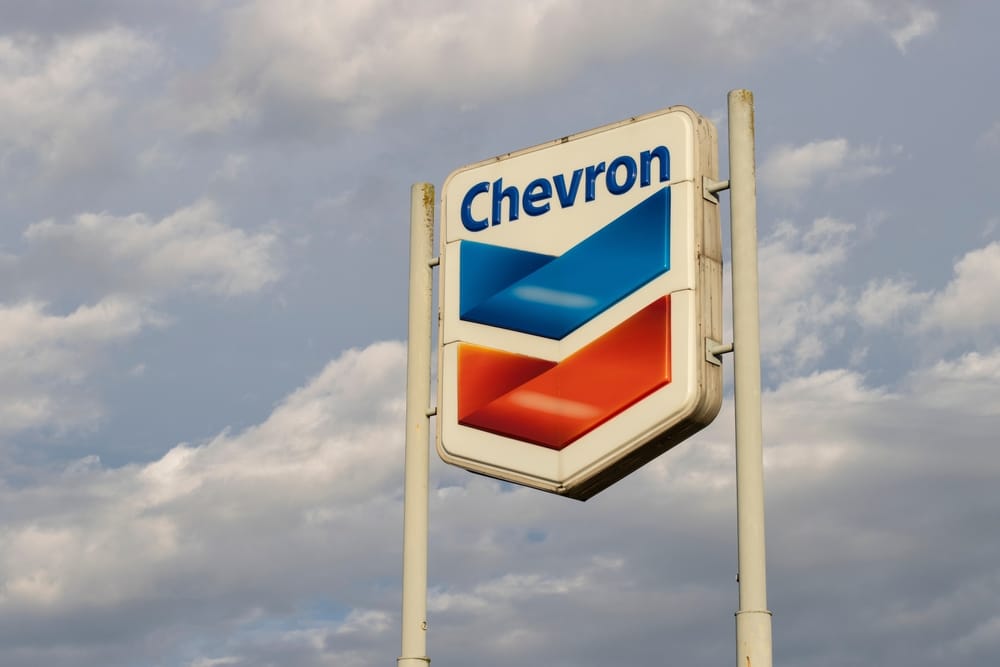
|

|
|
Arabi Gin
Cotton 'Links'
Market Data
News
Weather
Market Alerts
Resources
|
Chevron Layoffs 2025: Should You Buy, Sell, or Hold the Dividend Stock Amid Its 20% Workforce Reduction?
Chevron’s (CVX) decision to cut 20% of its workforce in 2025, recently impacting 800 employees in the Permian Basin region, comes at a tough time for the company. Chevron’s stock has lagged behind its peers over the past year The bigger picture isn’t much steadier. Oil prices have been unstable, with the EIA expecting Brent crude (CBQ25) to average $74 a barrel in 2025, down from $81 in 2024. At the same time, U.S. crude production is set to hit a record 13.6 million barrels per day this year. Potential supply-demand imbalances and changing trading patterns are weighing on Chevron and its peer energy stocks. Chevron’s layoffs and focus on cutting costs show how urgently big oil and gas companies need to adjust as the sector changes. Chevron’s dividend yield is still around 5%, but its debt is climbing as it keeps paying dividends and buying back shares even though free cash flow is shrinking. This puts Chevron shareholders at a crossroads: Is now the time to buy, sell, or hold this well-known dividend stock as it reshapes itself for what’s next in energy? Let’s find out. Chevron’s Financial Pulse Amid LayoffsChevron (CVX) is one of the world’s largest energy companies, working across the entire oil and gas process, from finding and producing oil and gas, to refining it into products like gasoline, and selling those products to customers. The recent performance in Chevron’s stock shows just how much pressure the company is under. Over the last 52 weeks, shares have dropped 11.1%. So far this year, the decline has continued, with the stock down 3.3%. Looking at the stock’s valuation, Chevron trades at a forward price-earnings ratio of 19.95x, much higher than the sector average of 11.85x. This means investors are still willing to pay more for Chevron’s size, stability, and future projects. Chevron’s latest financial results were mixed. In the first quarter of 2025, earnings fell sharply to $3.5 billion, down 36% from the year before, and revenue dropped to $47.6 billion, which missed what analysts were expecting. Adjusted earnings per share came in at $2.18, just above forecasts, but the numbers were dragged down by legal costs, tax charges, and currency issues. Still, Chevron managed to keep its cash flow strong and returned $6.9 billion to shareholders, showing it remains focused on rewarding investors and managing its money carefully. What’s Driving Chevron’s Future Growth?Chevron’s growth in 2025 isn’t just about layoffs and cutting costs. The company recently started producing oil from its Ballymore project in the deepwater Gulf of Mexico, which Chevron now acknowledges as the Gulf of America. Ballymore is expected to add up to 75,000 barrels of oil a day, which will help Chevron move closer to its goal of reaching 300,000 net barrels a day from the Gulf by 2026. Chevron is also looking beyond oil. It has teamed up with Engine No. 1 and GE Vernova (GEV) to supply natural gas power to new U.S. data centers. This project aims to deliver up to 4 gigawatts of reliable energy and is built to be flexible for future carbon capture and renewable upgrades. With the boom in artificial intelligence and digital infrastructure, this partnership could bring in new sources of revenue as demand for data centers grows. For investors who care about steady income, Chevron’s dividend stands out. The company has increased its payout for 38 years in a row. The latest quarterly dividend is $1.71 per share, with a yield around 5%, which is higher than the sector average of 4.24%. The payout ratio is just over 71%, which is on the higher side, but it shows Chevron’s confidence in its ability to keep paying even in a tough market. Analyst Sentiment and the Road AheadAnalysts are taking a careful approach with Chevron as the company works through job cuts and changes to its strategy. Out of 22 analysts, most rate the stock as a “Moderate Buy,” with an average price target of $161.59. That’s about 15% higher than the current price. Warren Buffett’s Berkshire Hathaway (BRK.B) still owns 6.8% of Chevron’s shares, which is another strong signal for investors. Still, some analysts are cautious. They point to falling cash flow, growing debt, and concerns about how much more Chevron can get out of its shale operations. ConclusionChevron’s sweeping layoffs and recent stock slump might make investors uneasy, but the company’s deepwater projects, bold moves into data center power, and unwavering dividend track record keep it firmly in the game. While the road ahead looks bumpy, analysts see decent upside, and Chevron’s fundamentals still point to resilience. For those who already hold shares, patience may yield rewards; for new investors, it’s a classic scenario of balancing short-term volatility against long-term prospects. On the date of publication, Ebube Jones did not have (either directly or indirectly) positions in any of the securities mentioned in this article. All information and data in this article is solely for informational purposes. For more information please view the Barchart Disclosure Policy here. |
|
|